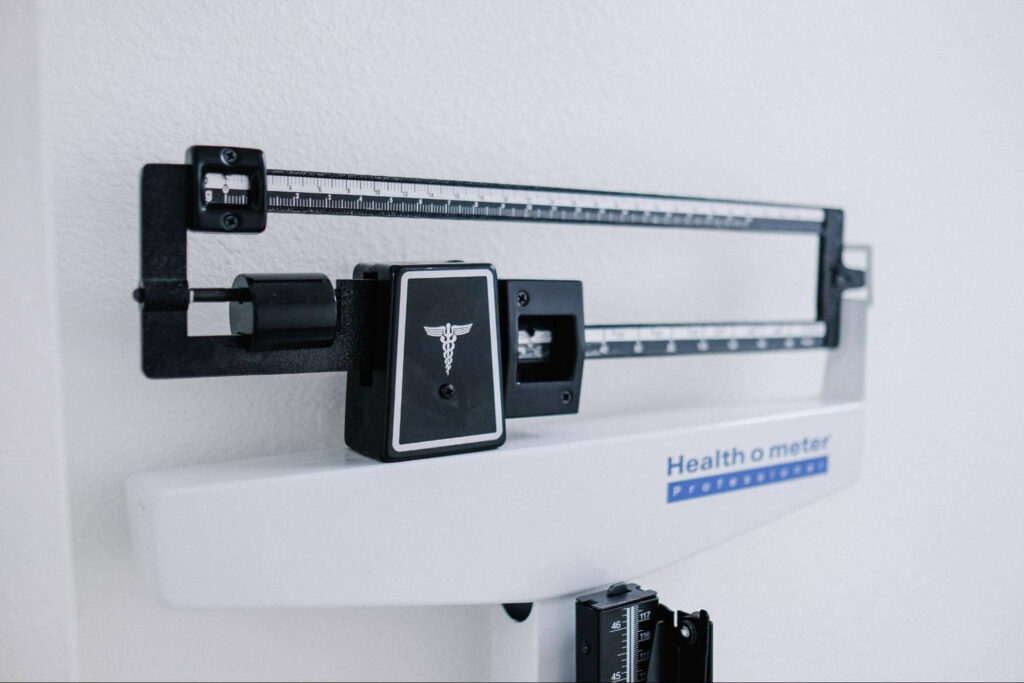Type 2 Diabetes is a chronic disease that affects how your body handles blood sugar (glucose). It occurs when your body either rejects the effects of insulin or produces insufficient insulin to maintain normal glucose levels.
High blood sugar levels can harm your neurons and blood vessels over time, resulting in health concerns. However, type 2 diabetes is frequently avoidable and controllable by lifestyle modifications such as diet, exercise, and, if necessary, medication.
The Centers for Disease Control and Prevention (CDC) estimates that over 37 million Americans have diabetes, with 90-95% of them having type 2 diabetes. Type 2 diabetes is becoming more common across the world.
This increase is linked to higher rates of obesity, sedentary lifestyles, and poor nutrition. Middle-aged and older persons, African Americans, Hispanics/Latinos, Asian Americans, and Native Americans are all at a higher risk of getting type 2 diabetes.
Type 2 diabetes is often a progressive condition that manifests itself gradually over time. There may be no symptoms at all in the early stages. Increased blood sugar from type 2 diabetes can develop obvious symptoms and health problems over time. Knowing the signs and symptoms can aid in early discovery and treatment.
The first sign of diabetes is often a progressive condition that manifests itself gradually over time. There may be no symptoms at all in the early stages. Increased blood sugar from type 2 diabetes can develop obvious symptoms and health problems over time. Knowing the early signs and symptoms can aid in early discovery and treatment.
8 Common Symptoms of Type 2 Diabetes
1. Increased Thirst and Frequent Urination

Increased thirst and frequent urination are two of the most prevalent early indicators of type 2 diabetes. This happens as a result of too much glucose in the circulation.
Normally, the body uses the hormone insulin to keep blood glucose levels balanced. Insulin permits glucose to enter cells where it may be utilized for energy. However, in type 2 diabetes, the body becomes insulin resistant or does not produce enough insulin to keep up with the glucose levels in the blood.
As blood glucose levels rise, the kidney’s ability to reabsorb glucose into the blood decreases. As a result, the extra sugar is excreted in the urine, dragging fluids from the tissues with it, causing an increase in urine.
The loss of fluids caused by frequent urination causes thirst as the body attempts to replenish itself. Adults with type 2 diabetes may pee up to ten times a day or wake up several times throughout the night to use the restroom. Around 30% of diabetics feel increased thirst and frequent urination.
Excessive thirst and frequent urination can lead to dehydration, which can exacerbate the high blood sugar levels. Paying attention to these early warning signals to be diagnosed is critical.
2. Increased Hunger

Increased appetite is one of the primary symptoms of type 2 diabetes. This has something to do with insulin resistance, which is one of the underlying causes of type 2 diabetes.
Insulin is the hormone that permits cells throughout the body to take in and utilize glucose from the bloodstream for energy. Insulin resistance occurs when the cells of the body become less susceptible to insulin’s actions. As a result, instead of being absorbed by cells, glucose accumulates in circulation.
The pancreas generates more insulin to overcome the resistance and deliver glucose into cells. Excess insulin in the circulation can interfere with hunger signals sent between the brain, fat cells, and the intestines.
It can stimulate appetite through a variety of methods, including:
Excess insulin may directly trigger the brain’s hunger and appetite centers, resulting in heightened sensations of hunger.
Insulin resistance can also result in poorly controlled blood sugar levels, increasing hunger and appetite even more. Hunger signals are sent when blood sugar levels go too low (hypoglycemia).
Insulin resistance increases fat accumulation, making it more difficult for the body to access and burn fat deposits. This can disrupt hormonal and appetite balance in fat cells, leading to overeating.
Insulin resistance impairs leptin production, a hormone fat cells produce that decreases hunger. This causes leptin resistance, which decreases feelings of fullness after eating.
Type 2 diabetes causes an increase in hunger and appetite due to insulin resistance and poorly managed blood glucose. The body is compelled to eat more to compensate for the dysregulated metabolism.
3. Fatigue
Type 2 diabetes is characterized by fatigue. Diabetes patients frequently suffer inexplicable weariness and a lack of vitality. There are various reasons why this syndrome causes fatigue:
When there is an excess of glucose (sugar) in the circulation, it cannot be adequately utilized for energy. This causes chronic weariness because cells lack the necessary fuel.
Diabetes frequently interferes with sleep, resulting in daytime weariness. Sleep apnea, restless leg syndrome, and overnight urination caused by elevated blood sugar levels are all typical problems.
Fatigue can be caused by additional diabetic consequences such as renal illness, anxiety, depression, and nerve damage.
Insulin resistance occurs when cells grow resistant to insulin’s functions. This resistance makes it more difficult for glucose to enter cells and be used for energy, which can lead to weariness.
Fatigue from restless leg syndrome is especially frequent in people with type 2 diabetes. Up to 20% of people have uncomfortable feelings in their legs and an insatiable need to move them. As this intensifies at night, it causes sleep loss. Diabetes treatment can alleviate this tiresome condition.
Overall, tiredness substantially influences the quality of life of people with type 2 diabetes. Stress management, adequate sleep hygiene, exercise when possible, and treatment of any sleep problems can all assist in alleviating persistent weariness. But, in the end, acquiring control of blood sugar levels is critical to overcoming the weariness of this illness.
4. Blurred Vision
Diabetes often causes blurred vision because high blood sugar levels cause the lens of the eye to expand, impairing your ability to concentrate. This is because high blood glucose causes fluid to be drawn from tissues into the circulation, and your eyes’ lenses are especially sensitive to this fluid imbalance.
According to research published in the journal Diabetes Care, around 60% of persons with diabetes will develop diabetic retinopathy, which can cause clouded vision, over their lifespan. The longer a person has diabetes, the more likely they are to have eye problems. After 20 years of diabetes, almost all patients will have some degree of damage to their blood vessels.
Blurred vision is more of a chronic condition than an acute one. You may have trouble focusing on items up close or reading. Blinking may momentarily enhance vision. As the condition continues, vision loss might become irreversible, therefore, frequent eye exams are essential. Controlling blood sugar levels can aid in the prevention or slowing of diabetic retinopathy and visual problems.
5. Slow Healing Sores
Slow healing of sores and wounds is a typical symptom of type 2 diabetes. This develops as a result of impaired circulation and wound healing caused by diabetes.
Diabetes can damage blood vessels and nerves, resulting in diabetic neuropathy. Neuropathy reduces blood flow to the extremities, particularly the feet and legs. Minor wounds and blisters might be difficult to heal without insufficient blood and oxygen flow.
Diabetes patients frequently have numbness in their feet as a result of nerve loss. This may cause sores or wounds to remain undetected for prolonged periods. Detecting and treating sores as soon as possible is critical to avoid serious infections.
Slow wound healing is a classic symptom of poor circulation and neuropathy in diabetes people. To avoid complications such as gangrene and amputation, the feet and legs must be closely monitored and cared for. Regular foot inspections by your doctor can aid in the early detection of issues. Keeping blood sugar under control might help reduce circulation problems and neuropathy.
6. Frequent Infections
Uncontrolled diabetes can impair the immune system and make the body more susceptible to bacterial and fungal infections due to high blood sugar levels. Excess sugar in body fluids increases bacterial growth when blood sugar levels are high. High blood glucose levels also impair the activity of infection-fighting white blood cells, lowering the body’s capacity to fight infections efficiently.
Some common infections that are more likely to arise in people with uncontrolled type 2 diabetes include:
Urinary tract infections (UTIs) – When blood sugar levels are high, bacteria can grow in urine. UTIs are very frequent in diabetic women.
Yeast infections – Although yeast occurs naturally in the vagina, excessive blood sugar levels can induce overgrowth, leading to infections. Yeast infections may affect men as well.
Jock itch and ringworm are examples of fungal diseases that thrive on the skin when blood sugar levels are not effectively managed.
Gum disease and cavities – Oral infections are more common because bacteria feed on the sugar in saliva, and diabetes lowers the body’s capacity to fight infections.
Bacteria and fungi on the skin have an easier time penetrating wounds and sores on the skin when blood sugar levels are high.
The best strategy to avoid repeated infections is to keep blood sugar levels as close to normal as possible through medication, exercise, and food. Working closely with your doctor and testing your blood sugar regularly can help lower the chance of infection. When infections do arise, it is also critical to seek treatment as soon as possible since they can quickly worsen if diabetes is not well-managed.
7. Skin Darkening
Insulin resistance is a major contributor to the skin darkening that might occur with type 2 diabetes. When cells resist insulin’s effects, the body produces more insulin to compensate. Higher insulin levels cause an increase in melanin synthesis, resulting in darker regions of the skin.
Dark spots commonly found on the neck, elbows, knees, knuckles, and armpits are known as acanthosis nigricans. Studies have shown that acanthosis nigricans affects anywhere from 7% to 74% of patients with diabetes. The large range of estimates is most likely attributable to variances in the research populations. Nonetheless, darker skin is a prevalent problem for those with type 2 diabetes.
Skin pigmentation can reveal information about a person’s level of insulin resistance. Higher insulin resistance is associated with more extreme darkening and spreading. Some people are examined and diagnosed with diabetes after observing inexplicable darker skin. Over time, treating the underlying cause of insulin resistance can help skin recover to a more normal look.
8. Unexplained Weight Loss

Undiagnosed or uncontrolled type 2 diabetes is also characterized by unexplained weight loss. Weight increase is more typically connected with type 2 diabetes owing to insulin resistance concerns, although unexplained weight loss can also occur.
Uncontrolled diabetes causes weight loss because the body cannot adequately use glucose for energy. When blood glucose levels remain extraordinarily high for an extended length of time, the body begins to burn down fat and muscle resources for energy instead, causing an increase in calorie and glucose excretion in the urine.
The process underlying unexpected weight loss in uncontrolled diabetes includes the following steps:
Excess sugar in the blood owing to insulin deficiency or insulin resistance. Glucose cannot enter cells and be utilized for energy without insulin.
Through a process known as gluconeogenesis, the body switches to burning fat and muscle tissue for energy instead, causing adipose and muscular tissue disintegration.
Excess blood glucose is eliminated through the urine, taking calories with it. Urination expels calories from the body, resulting in unexpected weight loss.
Weight reduction is also aided by dehydration caused by frequent urination.
The loss of calories due to urine and energy reserves from muscle and fat breakdown results in a fast and unplanned decline in body weight.
Unexpected weight loss in someone with diabetes should trigger a visit to the doctor for blood sugar testing. People with diabetes and high blood pressure should be particularly vigilant about this symptom. Controlling blood sugar levels with medication, food, and lifestyle changes can assist in stable weight.
Risk Factors
Understanding your risk factors for type 2 diabetes and the warning signals might empower you to take preventative steps. Among the most important factors are:
- Family history of type 2 diabetes
- Being overweight or obese
- Physical inactivity
- Unhealthy diet high in processed foods and sugary drinks
- Certain ethnicities (higher risk in African Americans, Hispanics, Native Americans, and some Asian Americans)
- Gestational diabetes during pregnancy
- Polycystic ovary syndrome (PCOS)
Management of Type 2 Diabetes

Don’t be alarmed if you’ve been diagnosed with type 2 diabetes. You may have a healthy and satisfying life with correct management and lifestyle adjustments. Here are some important strategies:
Healthy diet: For a healthy diet, focus on full, unprocessed foods, fruits, vegetables, and lean protein. Limit your intake of processed meals, fizzy drinks, and harmful fats.
Exercise regularly: Aim for at least 30 minutes of moderate-intensity physical activity on most days of the week.
Weight Management: Maintaining a healthy weight helps control blood sugar and lower the risk of problems. Consult your doctor or a trained nutritionist for specific weight-management advice.
Medication: Depending on the severity of your illness, your doctor may prescribe medication to assist in regulating your blood sugar levels. Examples of these drugs are oral medicines and injectable insulin.
Blood sugar monitoring: Tracking your blood sugar levels at home regularly helps you to track your progress and change your treatment plan as needed.
Regular doctor visits: Schedule regular checkups with your doctor to monitor your blood sugar levels, assess your overall health, and discuss any concerns you might have.
Frequently Asked Questions
Can you suddenly get diabetes?
Type 2 diabetes usually develops gradually over time, but symptoms might occur unexpectedly, especially if blood sugar levels rise rapidly. A sudden start of symptoms should demand quick medical attention.
Can you develop diabetes without knowing it?
Yes, it is possible to get type 2 diabetes without understanding it because the early symptoms might be subtle or misdiagnosed. Obesity, a family history of diabetes, or a sedentary lifestyle are all risk factors that require routine blood sugar tests.
What are the treatments for type 2 diabetes?
Type 2 diabetes is managed with lifestyle modifications such as a nutritious diet, frequent exercise, and weight control. Medications such as oral hypoglycemics and insulin may be required to control blood sugar levels. Regular monitoring and interactions with healthcare specialists are necessary for tailoring treatment programs.
Conclusion
Recognizing type 2 diabetes’s surprise early warning signals is critical for early intervention and good treatment. Individuals may take proactive actions to address risk factors, make lifestyle changes, and work closely with healthcare providers to manage the obstacles associated with diabetes by identifying these indicators.
Early diagnoses and comprehensive care are critical in maintaining good health and preventing type 2 diabetes complications.
Early diagnoses and comprehensive care are critical in maintaining good health and preventing type 2 diabetes complications, especially for those with long term health conditions.
If you enjoyed this article, you may also want to read this article on 10 Effective Ways to Lower Blood Sugar.
*This information is not intended to serve as a substitute for professional medical or dietary advice tailored to individual needs.
Po-Chang Hsu, M.D., received his medical doctorate from Tufts University School of Medicine in Boston. During his medical school training, Dr. Hsu worked with various patients, including adult and pediatric patients with acute and chronic conditions. Dr. Hsu’s interests include neurology, psychiatry, pediatrics, and sleep medicine.
Before medical school, Dr. Hsu finished a master’s degree at Harvard University and wrote a thesis on neuroimaging in schizophrenia patients at Brigham and Women’s Hospital, a Harvard Medical School-affiliated hospital. Dr. Hsu was also a part of the 2008 NASA Phoenix Lander Mission team, which sent a robotic spacecraft to the North polar region of Mars. Dr. Hsu also had research experience on neuroimaging in neonates at Boston Children’s Hospital, another Harvard Medical School-affiliated Hospital.
Since graduating from medical school, Dr. Hsu has worked as a full-time medical writer and consultant. In addition, he has experience writing and ghostwriting books and articles for physicians and health technology start-up companies. Dr. Hsu believes good communication between healthcare providers and patients creates the best results.
Publications
-Peer Reviewed Journal Article:
Kounaves, S.P., Hecht, M.H., West, S.J., Morookian, J.-M., Young, S.M.M., Quinn, R., Grunthaner, P., Wen, X., Weilert, M., Cable, C.A., Fisher, A., Gospodinova, K., Kapit, J., Stroble, S., Hsu, P.-C., Clark, B.C., Ming, D.W. and Smith, P.H. The MECA wet chemistry laboratory on the 2007 phoenix mars scout Lander. Journal of Geophysical Research. 2009, Mar; 114(E3): 10.1029/2008je003084.
-Poster Presentation:
2011 Harvard Psychiatry Mysell Poster Session; Boston, MA
Hsu, P.C., Rathi, Y., Eckbo, R., Nestor, P., Niznikiewicz, M., Thompson, E., Kubicki, M., Shenton, M.E. (March, 2011). Two-Tensor Diffusion Tensor Imaging of Acoustic Radiations in Schizophrenia




